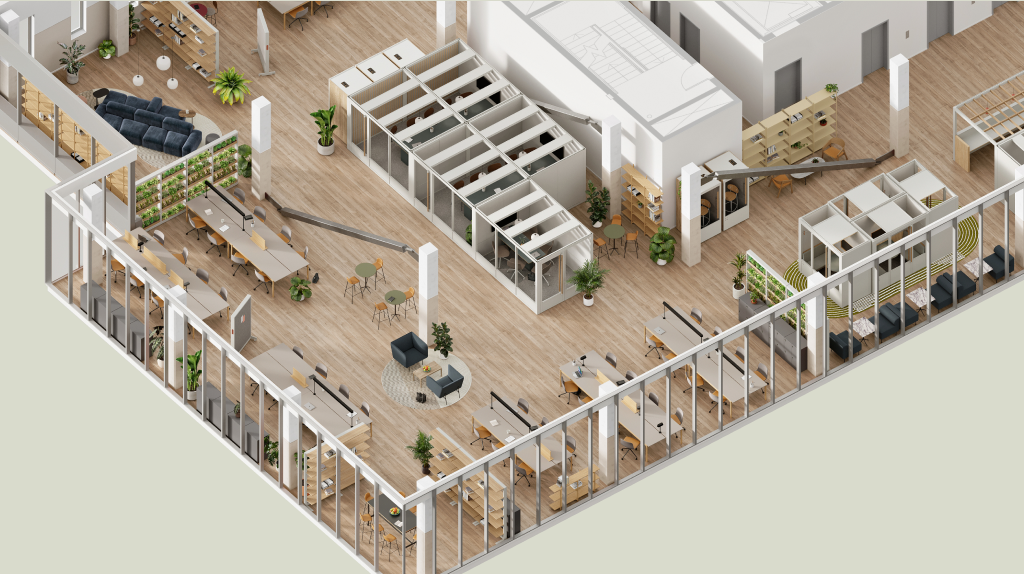Long hours and too much stress at work continues to take a toll. Does your workforce need a reset?
It’s been four years since the pandemic, and no one wants to talk about the pandemic anymore. Nor do they want to talk about the burnout that everyone appears to still feel.
“It’s still a pervasive issue,” says Jennifer Moss, a workplace consultant and author of The Burnout Epidemic and the upcoming book, Why are We Here. “We haven’t stopped meeting fatigue, video conference meetings. We haven’t reset. We’re still in poly-crisis, and people are starting to feel this uncertainty in the world and it’s persistent. There’s been no recovery time.”
May is Mental Health Awareness month, and mental health at work cannot be separated from burnout, which is unfortunately still widespread across the working world.
Disengagement is at its highest– and Gen Z in particular feels overwhelmingly hopeless, which is driving cynicism. In addition, 44% of people say they feel burned out from their work, 30% feel stressed, and 20% feel anxious, according to a recent survey by the Society of Human Resources Management. Just a third of people feel engaged in work, a quarter don’t think their employer cares about their wellbeing, and work stress is leading to marital problems, weight gain and substance abuse.
Burnout crosses all job levels and genders. CEOs are leaving their posts more today than ever before: a quadruple change in the biggest companies, and a lot of those leaders said that this was just not what they wanted anymore. Women are leaving the workforce at an unprecedented rate and opting for part-time work, and more high-earning men are working fewer hours than ever before, and more of them are working remotely. One in four managers say they are more overwhelmed than they’ve ever been, according to a recent survey by Gartner.

This overwhelm has prompted employees to use artificial intelligence out of desperation because they’re so overwhelmed with emails, web chats and meetings that they don’t have time to get their work done. In fact, 75% of people in desk jobs already use AI at work, and the amount of people using it has doubled over the past six months.
Yet there’s a great deal of anxiety, stress, and uncertainty caused by growing fears of AI automation. A survey by the American Psychological Association found that 40% of workers worry that AI might make their job obsolete— and those people were significantly more likely to report that their work has a negative impact on their mental health – half, versus 29 % of those who don’t worry about AI. Those people were more likely to feel that they don’t matter to their employer.
Employers should get ahead of speculation with proactive communication and strategy about what AI will mean for their workforce, writes Garen Staglin, co-founder of One Mind at Work, a group of business leaders that work towards improving workplace mental health. Smart leaders will explore mental health tools and education that uses AI for better workplace wellbeing.

What Employees Want
So, what are employees looking for when it comes to workplace wellbeing? People continue to say they want more flexible work schedules, mental health support, recognition and support, reduced workloads, and opportunities for growth and development.
Leaders can diminish burnout by prioritizing work for people, says Dulski. People are burned out because they are being asked to do too much, and at the end of the day, not all of those things are equally important, she says.
“This is where senior leadership really needs to step in and say, if we could only do so many things, what would be the most important and how do I give people clarity about that, so that they know how to also prioritize their own work?” says Dulski, who is also a business management lecturer at Stanford University.
Treat Each Person Uniquely
Yet everyone is unique in both what causes them burnout and what might help them address burnout. Savvy leaders will ask people about their working style preferences and what makes their day better and then teach them how to be more resilient.
The answers will be different depending on the person: one person may really need breaks in the middle of the day where she gets outside for her to better regulate emotions and her ability to work. Without it, she might be less productive and more burned out. Another person may need to focus on a single thing at a time before moving on to the next tasks. Juggling might lead to burnout.
“The real secret to curing burnout is to try not to do too much, prioritize well and then understand each individual so that you can help them solve it in their own unique way,” says Dulski.
It might sound obvious, but we feel less burned out when we feel more supported by the people we work with. Yet the number one mistake managers make is saying ‘I don’t have time for connection-based activity,’ says Dulski.
Innovative office design for mental health
Your workspace can also be a help or hindrance when it comes to burnout. Too many distractions, whether it’s noice or activity, can be a problem, but so can hours of solitude in a single office.
Be intentional about the space in which people work and offer a variety of work environments for people, says Kay Sargent, director of workplace at HOK, a global design, architecture and engineering firm.
“If you’re kind of in the same environment all the time, you’re not getting exposed to other stimulation, and that sameness can lead to burnout,” says Sargent. So can working too long without breaks, back-to-back Zooms and too much multitasking.
Create environments that have multiple settings and a variety of options that allow people to choose where they sit for the task at hand. That could mean biophilic office design or ensuring people have access to natural daylight, snacks and hydration, and creating spaces for deep focus work and social engagement, wider corridors that allow for more walking meetings and space to work outside if possible.
“Be very intentional about space and empower people with options and choices so they can find the right setting for the right task,” says Sargent.
Make time for connection
Teams can get so focused on accomplishing their goals that they don’t make time for human connection and chit chat, but that’s the way true teams are built and burnout is avoided, she says. “You cannot create a high performing team without investing time and understanding people and making them feel seen and heard,” says Dulski. “That is the other way to cure burnout.”


